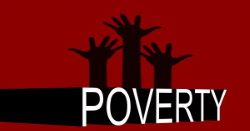Below are the poverty level data analysis for Texarkana Arkansas/Texas based on information as reported by the US Census available at factfinder.census.gov as of May 10, 2018.
One should be mindful that statistics are estimates and do not purport to be precise. Statistics give one an idea of what is probably going on based on available data. They are useful to identify areas of strength and weakness, areas to be celebrated and warning that areas need attention.
The poverty guidelines for the analyzed years are provided below. Year 2018 is included for information purposes although poverty tables for the concerned cities are not yet available for 2018. Complete poverty guideline tables may be found here as published by the Federal Government.
| Year | One Person | Each Additional Person | Family of Four |
|---|---|---|---|
| 2009 | $10,830 | $3,740 | $22,050 |
| 2016 | 11,880 | Varies | 24,300 |
| 2018 | 12,140 | 4,320 | 25,100 |
The given dollar amounts in the above table represent 100% of the poverty level. So for example for 2009 for a family of four, 50% of the poverty level would be 22,050 x .50 = $11,025 and 125% would be 22,050 x 1.25 = $27,562.50. Anyone whose income fall below the 100% level is considered poor according to the Federal Poverty Guidelines. Of course, many factors come into play as to whether a family/person is able to meet his/her quality life needs. That is why these levels are called guidelines.
The Center on Budget and Policy Priorities (CBPP) provides an analysis of the impact of Government Economic Security Programs (ESP) such as Food Stamps and rental assistance on reducing poverty. CBPP says ESP helps to move people above the poverty guidelines thresholds. However, these same people may yet struggle because ESP generally is intended to only cover the essentials of things like food and housing. But ESP might not adequately, if at all, cover things like daycare, transportation, cable TV, telephone, and clothing. A car payment for a reliable car or repair expenses for an unreliable car can be a burden even for people just over the poverty guidelines thresholds.
The below tables will show that far too many of our citizens find it difficult to achieve a high quality life; this applies to persons of all races and genders. There are many reasons for this of course. This includes personal bad choices, parents’ bad choices, ancestors’ bad choices, societal institutionalized obstacles, etc. Much of the nation-wide racial tension stems from perceived/actual institutional obstacles and their affect on quality of life and ample equitable opportunities. Sometimes such perceptions can be untrue yet have a negative impact on society. Sometimes such perceptions are of real/actual/true happenings. Both need ample attention.
In Matthew 26:11 Jesus says “For ye have the poor always with you; but me ye have not always.” I do not believe Jesus was suggesting that the poor should settle for remaining poor nor that the non-poor should ask the poor to so settle. In this event, he was addressing a particular situation.
In Matthew 25 and the rest of scripture, there are clearly principles outlined that say the poor should righteously seek a quality life according to that person’s reasonable quality standards and that the non-poor especially the highly-rich should help the poor to so do (Deuteronomy 15:11; Proverb 14:31; Luke 16:19-22, 23-24).
Below are the American Community Survey (ACS) 5-Year Estimates Of Selected Characteristics of People at Specified Levels of Poverty in the Past 12 Months. Years 2005-2009 and Years 2012-2016 are included to contrast and show the trends for the two periods. Categories covered include age, sex, race, and living arrangement. This data is an extract of the factfinder data tables as the table has been modified to omit the margin of error information. Full data tables are available at the above factfinder link.
Arkansas
Years 2005-2009
Texas
For the years 2012-2016 for Texarkana, Arkansas there were 1,105 more blacks in poverty than whites although there were 7,695 less blacks in the Texarkana, Arkansas population. The reported total population for this period was 17,740 and 10,045 for whites and blacks, respectively. For less than 100% of Poverty Level, the reported number of whites in poverty was 14.1% and for blacks 35.9%. That means 2,501 whites and 3,606 blacks in poverty.
For the years 2012-2016 for Texarkana, Texas there were 3,380 more blacks in poverty than whites although there were 6,679 less blacks in the Texarkana, Texas population. The reported total population for this period was 20,122 and 13,443 for whites and blacks, respectively. For less than 100% of Poverty Level, the reported number of whites in poverty was 12.6% and for blacks 44.0%. That means 2,535 whites and 5914 blacks in poverty.
The above numbers show that poverty is not strictly a racial issue to be resolved as I am confident the 5,036 whites in poverty needs help in resolving their poverty as well as the 9,520 blacks need such help. Any solution ought to seek to allevite poverty no matter the person’s race while recognizing and eliminating the cause of the clear proporational disparity whether that cause is institutional or cultural or both. It is probably all three with a spiritual/moral defect being the underlying cause of the cause.
Racial Disparities shown in above tables are below. Percentages refer to the corresponding percentage of the White and Black populations within the corresponding city for the corresponding year. This table considers only the Black and White races since they comprise the majority of the population in the two cities. In the table PL = Poverty Level. Percentage are for those less than 100% PL and less than 50% PL. Since original publication of this post, the below table has been updated to include data for Year 2017 which has become available. The table shows that in 2016 Texarkana, Arkansas average Poverty Rate for blacks and whites combined was 25% and for Texarkana, Texas it was 28.3% for the below 100% level. In 2017 it was 26.2% and 29% for Texarkana, Arkansas and Texarkana, Texas, respectively, for the below 100% level.
| City | Year | Whites (<100% PL) | Blacks (<100% PL) | Whites (<50% PL) | Blacks (<50% PL) |
|---|---|---|---|---|---|
| Txk AR | 2009 | 11.4% | 35.8% | 4.9% | 18.1% |
| Txk TX | 2009 | 14.4% | 31.4% | 6.3% | 17.4% |
| Txk AR | 2016 | 14.1% | 35.9% | 6.4% | 19.7% |
| Txk TX | 2016 | 12.6% | 44.0% | 3.8% | 18.8% |
| Txk AR | 2017 | 15.1% | 37.2% | 7.0% | 18.6% |
| Txk Tx | 2017 | 12.2% | 45.8% | 4.1% | 21.0% |
Similar information on poverty and related data reportedly for the latest data may be found on the welfareinfo.org website here for Texarkana, Arkansas and here for Texarkana, Texas.
So then by my calculations for Texarkana, USA the 2016 median (average) poverty rate for whites and blacks was 13.35% and 39.95% respectively showing black poverty rate approaches three times that of whites.
One might make the mistake of concluding that most blacks and most whites are doing well given that for example in 2016 86.65% of whites and 60.05% of blacks are above the government specified poverty level. The problem with that conclusion is that the government poverty threshold is minimal at best and does not reflect a desired level of quality life. The poverty threshold is largely a getting by amount. Those at lower levels above the threshold may not be able to for example adequately invest in their children’s future like those further up the chain. So then an equality or disparity begins to emerge not only with respect to poverty but also with respect to capacity above poverty. Also, these statistics show that there is a large gap between blacks and white such that blacks relative to whites are not doing very well proportionately.
A Census report entitled Income and Poverty in the United States: 2018 provides insight into this disparity. Also a research report entitled Adding Insult to Injury: Racial Disparity in an Era of Increasing Income Inequality developed in partnership with the US Census Bureau discusses income disparity based on synthesis of Census and IRS data; it is a 2017 research working paper that should be viewed as sufficiently complete for our purposes given the academia definition of working paper in that context an especially given one is able to compare it to the 2018 official Census report.
Also see US Census data on:
1. Households by Total Money Income , Race, and Hispanic Origin of Householder: 1967 to 2018 Percentile
2. Census 2016 Wealth Tables: The wealth table show that in 2016 the median net worth of Black Americans nationwide was $12, 920 and that of whites not Hispanic nationwide was $143, 600. That means in 2016 Black Net Worth was only 9% of White Not Hispanic Net Worth nationwide.
See Texarkana Arkansas School District report for related educational statistics.


